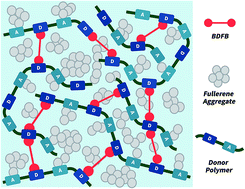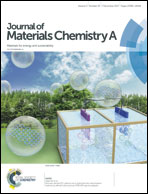Boosting the photovoltaic thermal stability of fullerene bulk heterojunction solar cells through charge transfer interactions†
Abstract
Fullerene-based bulk heterojunction organic solar cells (BHJ-OSCs) represent one of the current state-of-the-art organic solar cells. Nonetheless, most of these devices still suffer from adverse performance degradation due to thermally induced morphology changes of active layers. We herein demonstrate that the photovoltaic performance stability of BHJ-OSCs can be profoundly enhanced with an appositely functionalized 9-fluorenylidene malononitrile. The latter, through charge transfer (CT) interactions with a donor polymer, enables the formation of a “frozen” 3-dimensional mesh-like donor polymer matrix, which effectively restrains free movement of embedded fullerene molecules and suppresses their otherwise uncontrolled aggregation. 9-Fluorenylidene malononitrile derivatives with multiple CT interaction sites are particularly effective as preservation of a power conversion efficiency of over 90% under severe thermal stress has been accomplished. The generality of this novel strategy has been affirmed with several common donor polymers, manifesting it to be hitherto the most efficient approach to stabilized fullerene-based BHJ-OSCs.

- This article is part of the themed collection: 2017 Journal of Materials Chemistry A HOT Papers


 Please wait while we load your content...
Please wait while we load your content...